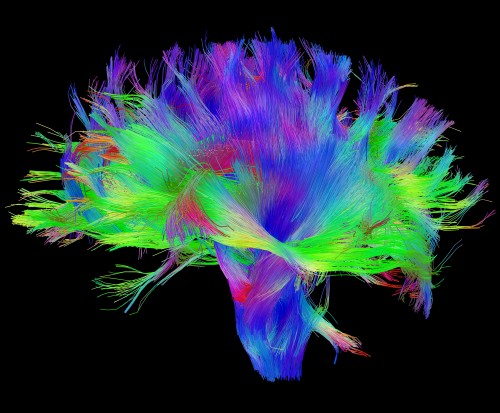
Diffusion MRI scan reveals the connections in the brain. (Courtesy: NIH/The Human Connectome Project)
By James Dacey
Many of you reading this will have experienced (or at least known somebody else who has experienced) a medical scan of some type. Even if you have a background in physics, these procedures can seem mysterious and even slightly menacing, not helped by the clinical designs of the equipment and some of the sounds they make. A new series of online courses offered by an academic collaboration in Scotland has been designed to demystify the world of medical-imaging techniques by presenting the science and technology in non-technical ways.
The courses include introductions to ultrasound, magnetic resonance imaging (MRI), positron emission tomography (PET), and computerized tomography (CT). “The material was designed for non-specialists with an interest in science who might want to understand a bit more about medical imaging: school teachers, pupils, patients, relatives of patients,” says Dave Wyper, director of the Scottish Imaging Network: A Platform for Scientific Excellence (SINAPSE).
SINAPSE is a consortium of six Scottish universities: Aberdeen, Dundee, Edinburgh, Glasgow, St Andrews and Stirling. The group specializes in medical imaging, and about 50% of its members are medical physicists. To develop these courses, SINAPSE teamed up with eCom Scotland, a specialist in online learning. In an e-mail exchange with Wyper, I learned that the courses – which can be accessed worldwide – present medical imaging in simple terms with the aid of basic graphics. Currently, each course costs just under £10 though the pricing is under review and courses may become free of charge in the future.
These medical-imaging courses are an interesting example of a recent development in education known as massive open online courses, or MOOCs for short. Despite their slightly silly name, MOOCs have the potential to transform online learning by widening global access to education. These are usually short courses mixing online teaching with assignments such as problem sets and extended projects. While the concept of online private study has been around for as long as the Web, the novelty with MOOCs is that these courses are freely available and the providers take full advantage of the latest Web technology, such as online video and interactive virtual labs.
You can learn more in a feature I wrote about the rise of MOOCs that appears in the March issue of Physics World, which is a special issue on education and is available as a free PDF download. I also produced this short film about a new initiative at the Massachusetts Institute of Technology in which MOOCs technologies are being incorporated into the traditional undergraduate physics programme. Take a look at that to discover what the students make of this new form of blended learning.
Guidelines
Show/hide formatting guidelines
this text was deletedwhere people live in harmony with nature and animals</q>
Some text